Creating a booklet, whether for marketing, education, or information dissemination, involves meticulous planning and thoughtful design. A well-crafted booklet can effectively communicate your message, captivate your audience, and leave a lasting impression. This blog explores the essential features of professional booklets, providing insights into creating impactful booklets that stand out.
Are you planning to print some booklets or pamphlets for promotion of your business? Connect with PrintingProgress for high quality results. We offer free nationwide delivery, so wherever you’re based in the UK, get in touch.
Call us at 0800 999 1094 or send us an email at info@printingprogress.co.uk and we will get back to you as soon as possible.
“Whether you want to publish a banner or a business card, PrintingProgress is one stop shop for all your printing needs”
Understanding the Purpose: What Makes a Good Booklet?
A good booklet serves its intended purpose effectively, whether it’s an informational booklet, a promotional piece, or an educational tool. The key lies in understanding the audience and tailoring the content to meet their needs. A clear objective ensures the booklet remains focused and relevant, making it a valuable resource for the reader.
Essential Elements of a Booklet
-
Engaging Content
The content is the heart of any booklet. Engaging booklet content should be informative, concise, and tailored to the audience’s needs. Avoid jargon and ensure the language is clear and accessible. Including real-life examples of booklets or case studies can make the content more relatable and engaging.
-
Effective Booklet Features
a. Structure and Organisation
A well-structured booklet is easy to navigate. An informative booklet structure typically includes a table of contents, headings, subheadings, and bullet points to break up the text. This organisation helps readers find information quickly and keeps the content manageable by using any content management software.
b. Visual Appeal
Visual appeal in booklets is crucial. High-quality images, graphics, and an appealing colour scheme can enhance the reader’s experience. The visual elements should complement the content and not distract from it.
c. Booklet Layout Tips
The layout should be clean and professional. Ample white space, consistent margins, and a balanced use of images and text contribute to a polished look. Following booklet typography guidelines ensures readability; choosing the right font size and style is essential. -
Professional Booklet Design
a. Cover Design
The booklet cover design is the first thing a reader sees, so it must be eye-catching and reflective of the content within. A compelling title, relevant imagery, and a professional layout can make a significant difference.
b. Interior Design
The interior design should maintain the same level of professionalism. Consistent design elements, such as headers, footers, and page numbers, contribute to a cohesive look. When considering how to make a booklet, focusing on both cover and interior design is essential. -
Choosing Materials and Printing Techniques
a. Booklet Materials
The choice of materials can affect the perception of your booklet. High-quality paper and a sturdy cover can convey a sense of professionalism. Consider eco-friendly options if sustainability is a priority.
b. Booklet Printing Techniques
Advanced booklet printing techniques, such as embossing, foiling, and UV coating, can add a touch of sophistication. These techniques should be used judiciously to enhance, not overwhelm, the overall design. -
Binding Options
The binding of a booklet can influence its durability and usability. Common booklet binding options include saddle stitching, perfect binding, and spiral binding. The choice of binding should depend on the booklet’s length and purpose.
How to Make a 10 Page Booklet
Creating a 10-page booklet involves careful planning and execution. Here are some steps to guide you:
1. Define the Purpose and Audience: Understand the booklet’s objective and the target audience.
2. Plan the Content: Outline the main sections and sub-sections. Ensure the content flows logically.
3. Design the Layout: Use professional design software to create the layout. Pay attention to margins, typography, and visual elements.
4. Create the Cover: Design an attractive cover that reflects the booklet’s theme and purpose.
5. Add Visuals: Incorporate high-quality images and graphics to complement the text.
6. Review and Edit: Proofread the content to eliminate errors. Check the layout for consistency.
7. Choose Materials and Printing: Select suitable paper and printing techniques.
8. Bind the Booklet: Choose an appropriate binding method.
9. Print a Test Copy: Review the test copy for any issues before mass printing.
10. Distribute: Ensure the booklet reaches the intended audience.
Examples of Informational Booklets
To provide some inspiration, here are a few examples of effective informational booklets:
- Healthcare Brochures: These often use clear infographics and concise text to explain medical procedures or health tips.
- Corporate Booklets: Used for company profiles or annual reports, these booklets typically feature a clean design with professional imagery and detailed financial data.
- Educational Pamphlets: Designed for schools or training programmes, these booklets include detailed curricula, schedules, and instructional content.
Creating Impactful Booklets
-
Focus on Quality Content
High-quality booklet attributes start with excellent content. Research thoroughly and provide accurate information. Well-written content that resonates with the audience is more likely to be impactful.
-
Maintain Visual Consistency
Consistency in design elements, such as fonts, colours, and image style, creates a professional appearance. This consistency helps reinforce brand identity and makes the booklet more visually appealing.
-
Prioritise Readability
Ensure the text is easy to read. Use a legible font size and style and avoid overcrowding the pages with too much text or imagery. Clear headings and subheadings guide the reader through the content.
-
Include a Call to Action
An effective booklet often includes a call to action, prompting the reader to take the next step. Whether it’s contacting for more information, visiting a website, or signing up for a service, a clear call to action can drive engagement.
Booklet Content Organisation
Organising content effectively is crucial for readability and engagement. Here are some booklet content organisation tips:
- Table of Contents: Provides an overview and helps readers navigate.
- Headings and Subheadings: Break up the text and highlight key sections.
- Bullet Points and Lists: Make information easy to scan.
- Images and Graphics: Support the text and add visual interest.
- Summaries and Highlights: Emphasise important points.
Conclusion
Creating a professional booklet involves more than just good writing. From understanding what makes a good booklet to mastering booklet layout tips, each aspect contributes to the final product’s effectiveness. By focusing on high-quality content, engaging design, and effective booklet features, you can create booklets that not only inform but also captivate your audience. Whether you’re figuring out how to make an information booklet or exploring booklet printing techniques, these guidelines will help you produce a polished, professional result.


 Eco friendly, sustainably sourced recycled FCS certified print
Eco friendly, sustainably sourced recycled FCS certified print Takeaway Screens
Takeaway Screens Postal Boxes
Postal Boxes